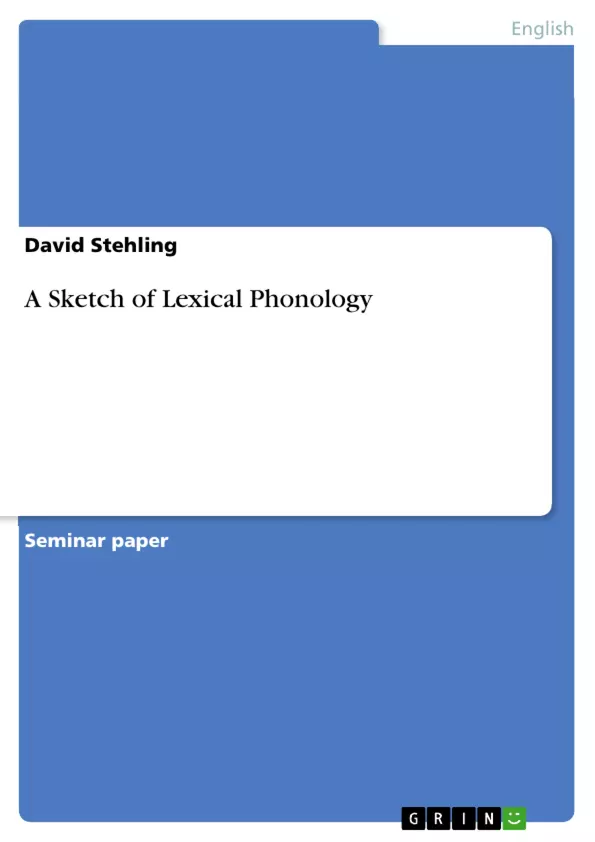Lexical Phonology (LP) is one of the numerous phonological approaches, which has been established after the publication of Chomsky’s and Halle’s (1968) phonological theory the Sound Pattern of English (SPE). The model of Lexical Phonology, which is based on Paul Kiparsky (1982) as well as Halle and Mohanan (1985), is especially characterized by the connection of phonology, morphology, and the lexicon as well as their influence on each other. It contradicts many of SPE’s main theses and thoughts and became one of the leading phonological theories in the 1980s.
This essay provides a sketch of LP and its constraints and conventions. This model is illustrated by using some examples of the various components of this approach. Furthermore, the differences between LP and Postlexical Phonology are pointed out. After this section, the controversies of this theory are discussed.
Inhaltsverzeichnis (Table of Contents)
- Introduction
- General Features of Lexical Phonology
- Interaction of Morphology and Phonology
- Morphology
- Phonology
- Lexical and Postlexical Phonology
- Controversies
- Summary
Zielsetzung und Themenschwerpunkte (Objectives and Key Themes)
This essay provides a detailed overview of Lexical Phonology (LP), a prominent phonological model that emerged in the 1980s. It explores the connection between phonology, morphology, and the lexicon, highlighting the influence each has on the others. The essay contrasts LP with Postlexical Phonology, discusses its core principles and controversies, and illustrates its mechanisms using examples from the English language.
- The relationship between phonology and morphology in word formation
- The role of the lexicon in shaping phonological rules
- The distinction between lexical and postlexical phonology
- The concept of levels or strata in phonological rule application
- The controversies surrounding Lexical Phonology
Zusammenfassung der Kapitel (Chapter Summaries)
The first chapter introduces Lexical Phonology (LP), outlining its key principles and situating it within the history of phonological theory. It emphasizes the model's connection between phonology, morphology, and the lexicon. The second chapter delves into the general features of LP, focusing on the concept of lexical and postlexical phonology and the role of levels or strata in phonological rule application. The third chapter examines the interaction between morphology and phonology, exploring the different levels at which morphological processes occur and the phonological rules associated with each level.
Schlüsselwörter (Keywords)
Key terms and concepts explored in this text include Lexical Phonology, morphology, phonology, lexicon, lexical rules, postlexical rules, levels, strata, word formation, affixation, Elsewhere Condition, and the Sound Pattern of English.
- Quote paper
- David Stehling (Author), 2009, A Sketch of Lexical Phonology, Munich, GRIN Verlag, https://www.grin.com/document/205522



